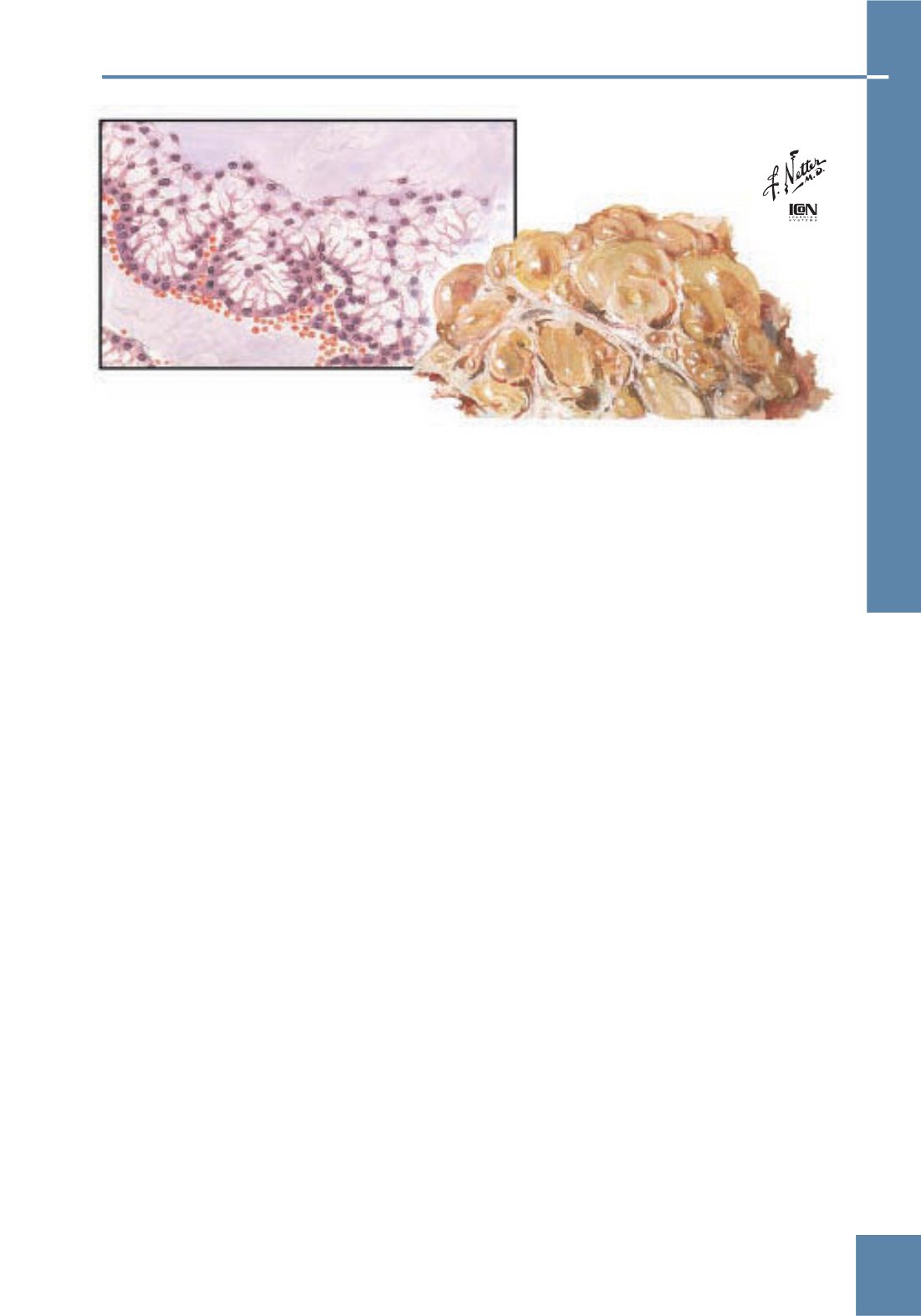

277
Seudomixoma peritoneal
ENFERMEDADES DE LOS ANEJOS
SEGUIMIENTO
Control de la paciente:
Seguimiento cuidadoso de la
recidiva de la enfermedad pélvica o el creci-
miento del ovario contralateral (si se produ-
ce). Generalmente se realiza mediante explo-
ración pélvica y ecografía.
Prevención/evitación:
Manipulación y extirpación
cuidadosas de las masas ováricas.
Posibles complicaciones:
Generalmente sigue un
curso insidioso con progresiva disfunción in-
testinal, infecciones intercurrentes, inanición y
muerte.
Resultados esperados:
El pronóstico es mejor en pa-
cientes cuyo tumor proviene de adenomas
(apendicular u ovárico) que de carcinomas.
MISCELÁNEA
Consideraciones en el embarazo:
Sin efectos en el em-
barazo.
Códigos CIE-9-MC:
197.6.
BIBLIOGRAFÍA
American College of Obstetricians and Gynecologists.
Cancer of the Ovary.
Washington, DC: ACOG; 1990.
ACOG Technical Bulletin 141.
Amortegui AJ. Ovarian tumors of low malignant poten-
tial (atypically proliferating ovarian tumors) In: Scia-
rra JJ, ed.
Gynecology and Obstetrics.
Vol 4. Philadelp-
hia, Pa: JB Lippincott; 1996;29:20.
Jones DH. Pseudomyxoma peritonei.
Br J Clin Pract
1965;19:675.
Ronnett BM, Kurman RJ, Zahn CM, et al. Pseudomyxo-
ma peritonei in women: a clinicopathologic analysis
of 30 cases with emphasis on site of origin, progno-
sis, and relationship to ovarian mucinous tumors of
low malignant potential.
Hum Pathol
1995;26:509.
Rutgers JL, Baergen RN. Mucin histochemistry of ova-
rian borderline tumors of mucinous and mixed-
epithelial types.
Mod Pathol
1994;7:825.
Wertheim I, Fleischhacker D, McLachlin CM, Rice LW,
Berkowitz RS, Goff BA. Pseudomyxoma peritonei: a
review of 23 cases.
Obstet Gynecol
1994;84:17.
Seudomixoma peritoneal
©









